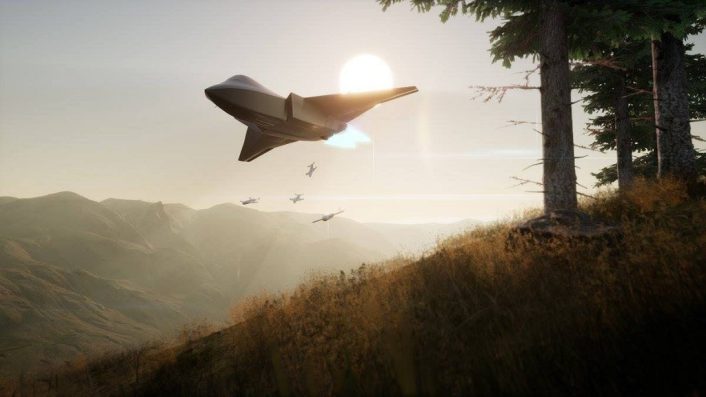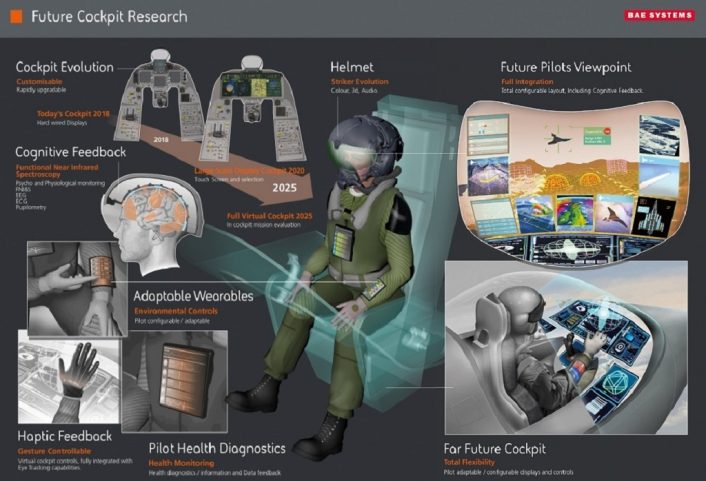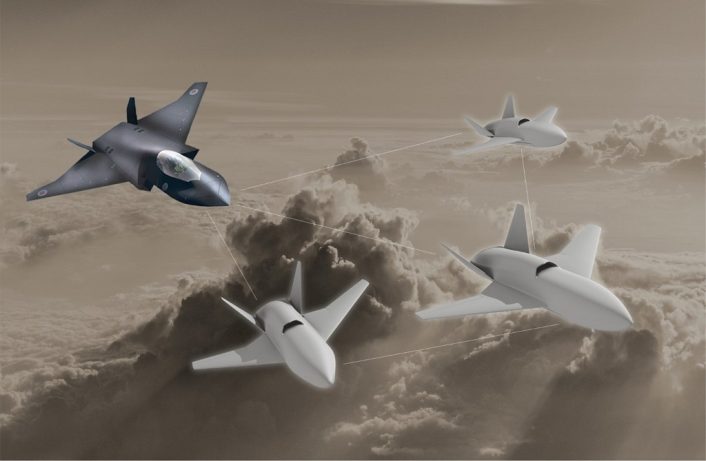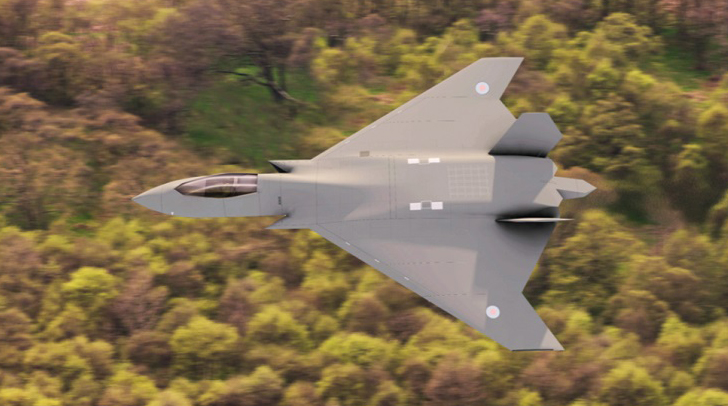Development for the new Tempest sixth-generation fighter is moving on with some revolutionary concepts.
Team Tempest and the Royal Air Force recently held a virtual event to provide an update about the development opportunities of the new sixth generation aircraft to industry and government representatives from Northern Ireland, the first of a series of events to engage with industries across the UK. Within the press release there is also some new renderings of the aircraft which, we have to note, is not in its final shape as it’s being designed “from the inside out” and the airframe’s exterior design may change to reflect changes in the internal systems.
Since Team Tempest was launched in 2018, we have been working to create the future of combat air.
Today, we are launching our new interactive 3D model where you can explore our vision for the future. #TeamTempestUK
Click the link below ⬇️https://t.co/zj1cEL06ly pic.twitter.com/YWRQqD0U8F
— Team Tempest (@TeamTempestUK) July 17, 2020
According to the press release, “Delegates heard from Air Chief Marshal Sir Michael Wigston and other RAF senior leaders who highlighted how Team Tempest is taking a revolutionary approach to partnership, engaging with a wide range of leading companies, SMEs and academia to bring leading innovators into the endeavour and ensure the UK remains at the leading edge of Combat Air systems development. The RAF Capability leadership team highlighted updates in emerging strategy and identified examples of innovation and future opportunities. Key members from the Team Tempest industry partner community also provided attendees with updates on the programme and explained how Tempest is working in radical ways to develop world-leading capability, with a focus on affordability and efficiency.”
Team Tempest is currently made of the core industry partners BAE Systems, Rolls Royce, Leonardo UK and MBDA UK, which were joined last year by Leonardo Italy, Elettronica, Avio Aero, MBDA Italy, Saab and GKN Aerospace Sweden and, more recently, by Thales UK, Bombardier Belfast, Collins Aerospace, GE Aviation UK, GKN Aerospace, Martin Baker and QinetiQ. A widespread industry participation is considered essential for the programme to bring the best expertise to work on the more than 60 technology demonstrations which are currently in progress.

According to a statement shared by the UK Ministry of Defence and the core industry partners, “Tempest is one of the UK’s most ambitious technological endeavours and designed to deliver a highly advanced, adaptable combat air system to come into service from the mid-2030s. This next generation combat aircraft, which forms part of a wider combat air system, will exploit new technologies as they evolve to respond to the changing nature of the battlespace, addressing increasingly high-tech and complex threats and conflict.”
Back in October, engineers working on the project revealed some of the highly innovative systems that are being developed for Tempest as part of the Future Combat Air System Technology Initiative (FCAS TI) programme. Here is what has been disclosed to the public so far.
Leonardo, which is the project lead for electronics, is developing a new radar technology called Multi-Function Radar Frequency System. The new sensor will reportedly collect and process 10’000 times more data than existing systems, or “equivalent to the internet traffic of a large city every second”, providing the operators with a clear view of the battlespace and of potential targets. According to the company, complete sub-systems have already been built and successfully tested, paving the way eventually to future airborne testing.
BAE Systems if working on another revolutionary concept, the “wearable cockpit”. In this case, the cockpit as we know it, full of switches, gauges and screens, becomes completely digital and all physical controls are replaced by Augmented and Virtual Reality systems. The new cockpit would be projected inside the pilot’s helmet and completely customizable according to the pilot’s preference and mission’s needs.

As human-AI teaming, a virtual copilot is being developed to interact with the pilot and provide support during the flight. “Psycho-physiological” technologies are also being trialed to study the operator’s physical and cognitive processes to better understand increasing exertion, stress, workload and fatigue. According to the company, some of these technologies are being tested controlled test flight conditions aboard the Typhoon to inform further development. MBDA UK is also working on the wearable cockpit concept to integrate weapons systems information and operations.
Rolls-Royce is working on the advanced combustion system technology that will power Tempest. The next-generation system is being designed to be hotter than previous ones to increase the efficiency of the engine, its range and speed, while reducing carbon dioxide emissions. Together with the higher-temperature combustion, there will be a new thermal management system that will use the turbine as a heat sink to recycle thermal energy, removing the need for overboard venting and improving the efficiency, and an increased electrical power production, reportedly in the order of one megawatt, that will be used to power all the aircraft’s subsystems.
This follows the assessment by Rolls Royce that future fighter aircraft will have unprecedented levels of electrical power demand and thermal load that need to be managed accordingly to maintain the airframe’s low observability. Being more specific, the company stated that they will integrate an Electrical Embedded Starter Generator that will function both as an APU and as an electrical generator after the engine is spooled up.

The Tempest is expected to have also his own loyal wingman, currently being developed as the Lightweight Affordable Novel Combat Aircraft (LANCA) concept. According to the MoD, LANCA will offer “increased protection, survivability and information for the manned aircraft – and could even provide an unmanned combat air ‘fleet’ in the future.” A demonstration project, called “Moquito” and comparable to the Skyborg program of the U.S. Air Force, is currently in its first phase of evaluation.
Three teams, Boeing Defence UK, Team Avenger (led by Blue Bear Systems Research), and Team Blackdawn (Callen-Lenz, Bombardier Belfast and Northrop Grumman UK), submitted designs for the flight demonstrations phase, which could begin in 2022-2023, after two finalists are selected during second phase of evaluation. LANCA will reportedly be a transonic aircraft costing one-tenth of a fighter aircraft, able to employ multi-role sensors, Electronic Warfare suites and both air-to-air and air-to-surface weapons.
The unmanned aircraft project, led by the RAF Rapid Capabilities Office and the Defence Science and Technology Laboratory, originated in 2015, three years before the Tempest announcement. While a timeline for its entry into service has not been disclosed, the LANCA may be first deployed alongside the Typhoon and the F-35, before the entry into service of the new Tempest in 2035.










